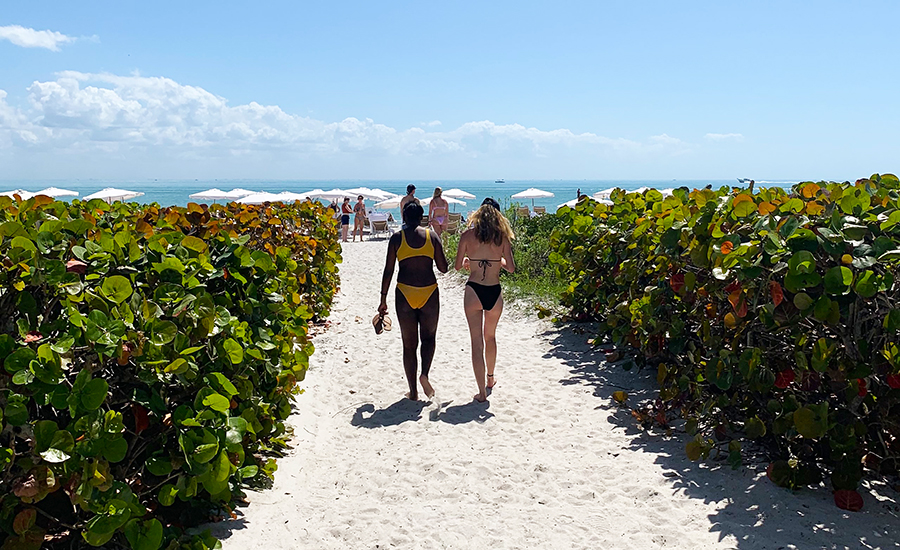Despite the twin challenges of COVID-19 and negative economic indicators, all six winter months are posting rate increases from September through February at participating Southeast resort destinations, according to data released by DestiMetrics, a division of Inntopia, in their monthly Market Briefing.
Aggregated results include updated information on occupancy, rate, and revenues through Nov. 30.
For the month of November, actual occupancy slipped 4.4 percent compared to last November but in sharp contrast, the Average Daily Rate (ADR) was up a solid 12.4 percent and delivered a 7.4 percent increase in revenues for the month.
Bookings made during the month of November for the remainder of the winter months and into early summer continued at the robust pace of previous months, particularly for very short-lead reservations. November bookings for arrival in that month were up 56.2 percent in a year-over-year comparison to last year. December was the only month showing some wobble, down 4.6 percent, while the subsequent three months showed monthly increases ranging from 0.4 percent to 69.5 percent compared to the same time last year, though with relatively low booking volume.
“Consumers are clearly weary of waiting and are eager to travel to the Southeast despite alarming increases in both the number of new COVID-19 infections and deaths,” observed Tom Foley, senior vice president of Business Analytics, Inntopia. “That commitment to travel is showing up in consumer acceptance of the steady rise in room rates that we’ve been seeing for the past several months, even though there are some economic headwinds blowing along with public health concerns.”
As of November 30, the full winter season for participating Southeast destinations paints a promising picture. Aggregated occupancy for the six-month period is up 3.6 percent compared to last year at this time led by the surge in September of 36.8 percent with moderate fluctuations during the next four months. However, as in other regions of the U.S., occupancy is weakening as the season progresses with the winter currently culminating in February with a 30.1 percent decline in on-the-books occupancy during that month.
Aggregated ADR for the six months is up 22.1 percent and when combined with the overall slight increases in occupancy, is providing a 26.5 percent increase in revenue compared to last year.
That drop in occupancy for February, the last month of the winter season, is being attributed to the reduction in the number of seasonal snowbirds from Canada. That segment of the market is not expected to recover this year due to the pandemic and lodging properties may have difficulty replacing that number of visitors during February.
Economic Measurements
Key economic indicators were mixed as COVID-19 and, as of November 30, the Dow Jones Industrial Average (DJIA) surged ahead 12.9 percent from October and delivered the highest monthly close in the Index’s history. This reversal from the losses in September and October was primarily driven by investor enthusiasm about the positive coronavirus vaccine news.
“Although strong financial markets can typically be expected to buoy destination travel, ongoing health concerns along with localized restrictions in some destinations are likely to dampen positive feelings resulting from the Dow Jones’ big November finish,” cautioned Foley.
The Consumer Confidence Index (CCI) dropped 5.2 percent in November to take it to 96.1 points, and the first time it has dropped below the 100-point benchmark since August. The national Unemployment Rate dipped from 6.9 percent to 6.7 percent but reflects that 400,000 workers stopped their job search, removing themselves from unemployment calculations. Although 245,000 new jobs were added in November, it is the fifth consecutive month that job creation slipped from the previous month and illustrates a stall in employment recovery. Most critically, 9.2 million workers remain unemployed since the onset of the COVID-19.
First Look At Summer
A first look at data for March and the first month of the Southeast’s summer season shows that occupancy on-the-books for that month is up 69.5 percent in a year-over-year comparison, suggesting an encouraging start to the season as of November 30.
“After a small hiccup in October, occupancy increased slightly during November with short-lead arrivals for November and longer-lead arrivals for January and February dominating the booking pace,” Foley continued. “That tendency to book 45 days or less before arrival is a trend we are seeing throughout the travel industry as consumers remain cautious about long-term commitments as the pandemic and economic uncertainty continues to have a strong influence on travel plans,” he concluded.
Photo courtesy Sanibel Island, FL
















